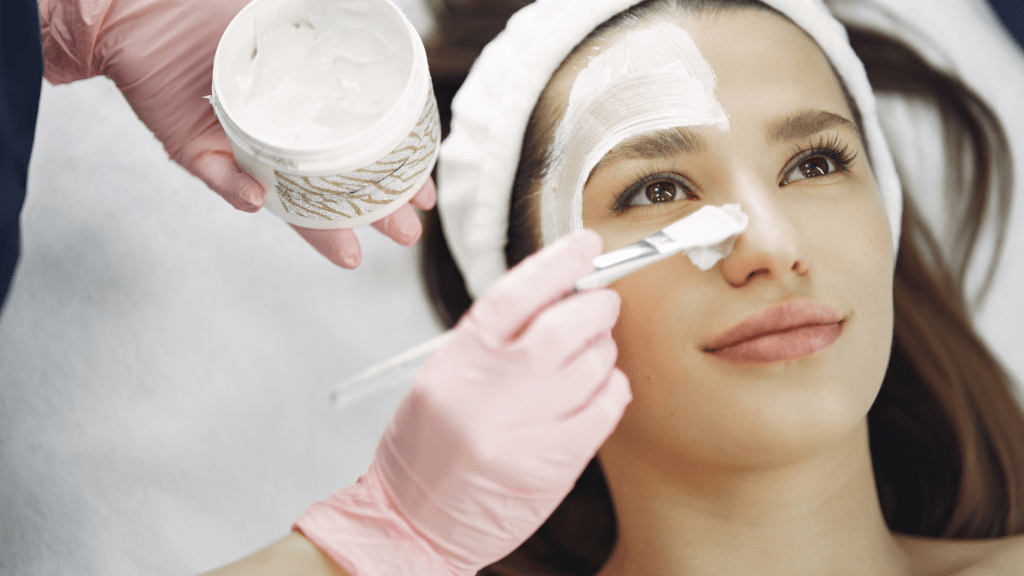Understanding Exfoliation
Exfoliation plays a crucial role in maintaining healthy skin. By understanding its fundamentals, one can optimize their skincare routine effectively.
What Is Exfoliation?
Exfoliation is the process of removing dead skin cells from the skin’s surface. It promotes cell turnover, revealing smoother and brighter skin underneath.
According to the American Academy of Dermatology, exfoliation can enhance the effectiveness of skincare products by improving their absorption into the skin.
Different Types of Exfoliation
Physical Exfoliation
Physical exfoliation uses abrasive materials to manually remove dead skin. Products like:
- scrubs
- brushes
- sponges
are common examples.
Physical exfoliants are suitable for many regions of the body but should be used gently to avoid skin irritation.
Chemical Exfoliation
Chemical exfoliation involves the use of acids or enzymes to dissolve dead skin cells. Alpha hydroxy acids (AHAs) like glycolic acid and beta hydroxy acids (BHAs) like salicylic acid are popular examples.
Dermatologists recommend chemical exfoliation for individuals with acne-prone or sensitive skin as it tends to be less abrasive than physical exfoliation.
Mechanical Exfoliation
Mechanical exfoliation includes tools like microdermabrasion devices to slough off dead skin cells through friction. Dermatology clinics often offer advanced forms of mechanical exfoliation.
This method achieves deeper exfoliation compared to at-home options.
Understanding these types of exfoliation helps in choosing the right method for one’s skin type. Regular and proper exfoliation promotes clearer, smoother, and more radiant skin.
The Skin Benefits of Regular Exfoliation

Exfoliation brings numerous advantages to the skin. Regular practice helps achieve clearer, smoother, and more radiant skin.
Enhanced Skin Texture and Tone
Exfoliation improves skin texture and tone. It removes dead skin cells, revealing the fresher, brighter skin beneath. For example, I notice my skin feels softer and looks more even after exfoliating regularly.
Removing the buildup of dead cells minimizes dullness and rough patches, resulting in a more uniform and glowing complexion. Methods like chemical exfoliants with AHAs or BHAs work especially well for improving texture and tone by promoting cell turnover.
Improved Absorption of Skin Care Products
Exfoliation enhances the absorption of skincare products. When dead cells accumulate on the skin surface, they can block pores and create a barrier that prevents products from penetrating effectively.
By removing this layer, exfoliation ensures that serums, moisturizers, and other treatments work better and deliver their active ingredients deeper into the skin.
For instance, I find that my serum absorbs more quickly and seems to be more effective after I’ve exfoliated. This leads to improved hydration, nourishment, and overall skincare results.
Health-Related Advantages of Exfoliation
Exfoliation offers several health-related benefits that extend beyond just improved skin appearance. It plays a key role in boosting circulation and preventing acne, making it a crucial step in any effective skincare routine.
Boosting Circulation and Lymphatic Drainage
Exfoliation stimulates blood flow, enhancing circulation. Improved blood flow delivers oxygen and nutrients to skin cells and promotes cell regeneration.
The process of gently massaging the skin during exfoliation encourages lymphatic drainage, helping remove toxins and reduce inflammation. For example, when I exfoliate regularly, my skin appears healthier and less puffy.
Contribution to Acne Prevention
Exfoliation helps prevent acne by unclogging pores and removing debris. Dead skin cells, excess oil, and dirt buildup often contribute to breakouts.
By eliminating these impurities, exfoliation reduces the likelihood of clogged pores and related acne. I noticed that regular exfoliation leads to fewer breakouts and a clearer complexion, especially when using salicylic acid, which targets acne-prone areas effectively.
How Often Should You Exfoliate?
Frequency of exfoliation depends on your skin type, as each has unique needs. Over-exfoliation can damage skin, so it’s important to find the right balance.
Recommendations for Different Skin Types
- Sensitive Skin: Exfoliate once a week using gentle exfoliants like lactic acid to avoid irritation. Over-exfoliation may cause redness and discomfort.
- Dry Skin: Exfoliate 1-2 times a week with hydrating exfoliants such as glycolic acid to retain moisture. This prevents the skin from getting too flaky.
- Oily Skin: Exfoliate 2-3 times a week using beta-hydroxy acids like salicylic acid to control excess oil and unclog pores. Overuse can lead to increased oil production.
- Combination Skin: Exfoliate 2 times a week, targeting oilier areas with stronger exfoliants and gentler products for drier sections. This approach balances the skin’s varied needs.
- Normal Skin: Exfoliate 2 times a week with mild exfoliants like fruit enzymes to maintain overall skin health. This keeps the skin looking fresh and radiant.
For optimal results, adjust frequency based on your skin’s response, ensuring not to overdo it. Proper exfoliation routine ensures healthy, glowing skin.


 Edward Strzelecki is a valued article writer at Body Care And Matter, known for his straightforward and accessible approach to health and wellness topics. With a focus on clarity and practicality, Edward's writing provides readers with easy-to-understand information that they can apply in their daily lives.
Edward Strzelecki is a valued article writer at Body Care And Matter, known for his straightforward and accessible approach to health and wellness topics. With a focus on clarity and practicality, Edward's writing provides readers with easy-to-understand information that they can apply in their daily lives.

